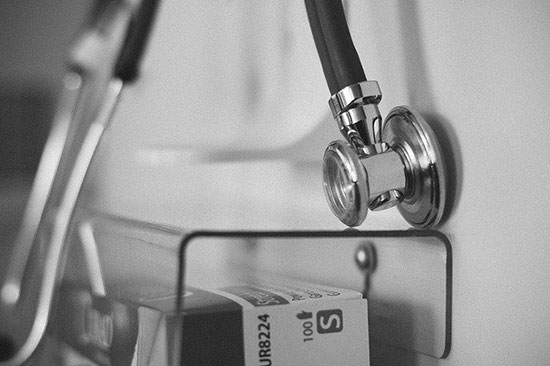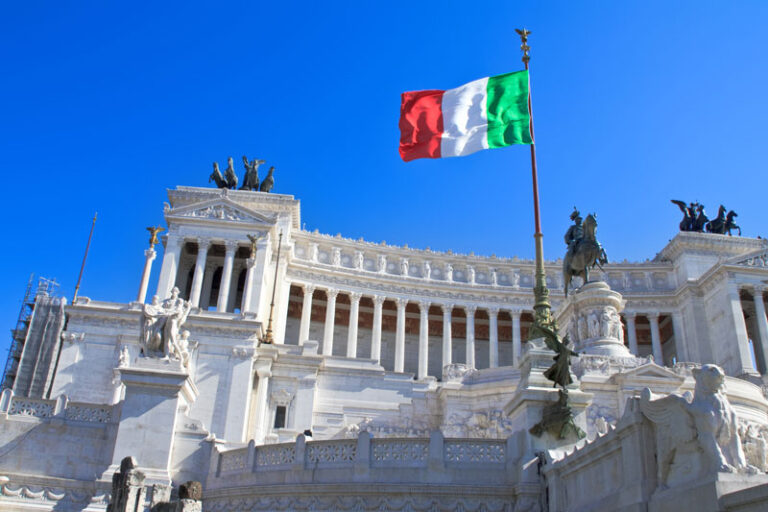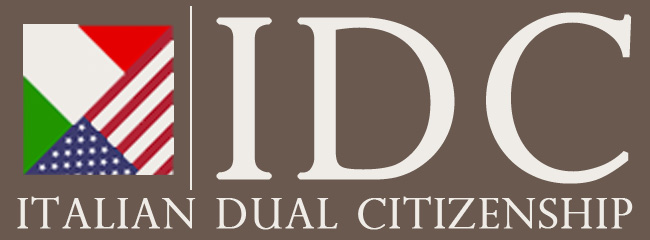
The Italian healthcare system is one of the most effective in the world. Since its introduction in 1978, the Servizio Sanitatio Nazionale (or the Italian National Health Service) is responsible for a significant increase in the quality of life and overall living standards of Italian citizens. Along with other welfare programs and systems, Italian healthcare has expanded the average life expectancy of Italians. WHO reports that the average lifespan for male Italians is 80.5 years, while women are expected to live 84.9 years.
The Italian National Health Service operates on a regional basis under the direct supervision of both national and local government entities. The system aims to provide universal coverage and is based on the principles of communal care. As a result, Italian healthcare services are either completely free or at prices much lower than the standard market rates.
In this article, you will learn all you need to know about the Italian healthcare system. You will see how it is organized and funded and what types of coverage there are for different citizenship levels.
Organization and Funding
The Italian healthcare system gets most of its funding from taxes — specifically, from the so-called regional production tax (IRAP). This corporate tax is collected on a national level but calculated on a regional one. As a result, different regions have different tax returns, depending on their overall contribution to the system.
Another source of funding is the personal income tax (IRPEF). This is collected on a national level and then redistributed to regions that do not have the necessary funds to provide all needed healthcare services. Essentially, the money from the IRPEF tax acts as a balancing tool for the Italian healthcare system. It ensures that all Italian regions have access to all levels of healthcare.
Even though the Italian national government distributes the funds, it is up to local authorities to utilize them. Local governments organize and deliver services through healthcare units (known as ASL) and have complete control over their healthcare systems. ASL units are generally run by one person, appointed by the government. Through them, Italian citizens get access to:
- Primary care
- Hospital care
- Outpatient care
- Public healthcare
- Social services
Coverage for Italian Citizens
When it comes to what services are covered by the Italian National Health Service, a specific set of criteria applies. There are two lists — one for services included in the coverage and another for services that are not. Each medical service receives a rank based on the following criteria:
- Medical necessity
- Effectiveness
- Appropriateness
- Efficiency in delivery
- Human dignity
Services that are ranked high based on those criteria are included in standard coverage and accessible to all Italian citizens. Some of the core healthcare benefits Italians get include:
- Primary care
- Inpatient care
- Outpatient care
- Pharmaceuticals
- Preventive medicine
- Home care
- Hospice care
The Italian National Health Service does not cover services for which hospital care is deemed inappropriate or is needed on a case-by-case basis. Some examples of those include laser eye surgery, orthodontics, and cosmetic surgery. It is important to point out that dental care is not covered, even though there are some exceptions to that rule. In some cases, vulnerable people and children get access to dental services through the Italian healthcare system.
EHIC – European Health Insurance Card
One of the many perks that the European Union provides for its citizens is the European Health Insurance Card (EHIC). It allows you to receive state-provided healthcare services in any of the EU member states, including Iceland, Liechtenstein, Norway, and Switzerland. With an EHIC, you are essentially treated as a citizen of the country you are currently in — you are entitled to the same quality and standards of service. On many occasions, this means that you actually get free healthcare services in the EU.
Citizens of the UK now have their own version of EHIC, since they are no longer a part of the EU post-Brexit. The Global Health Insurance Card (GHIC), which can be acquired by all UK residents, allows them to get essentially the same benefits of having an EHIC. However, there are some notable differences between EHIC and GHIC.
In this article, we will tell you all you need to know about both EHIC and GHIC. We will discuss eligibility, coverage, and how and where they can be used. Finally, we will explain to you the difference between EHIC/GHIC and the standard travel insurance provided by companies around the world.
What Is a European Health Insurance Card?
Essentially, with a European Health Insurance Card, you are eligible to receive the same healthcare benefits as the citizens of any EU country you go to. If the country you are currently in offers free healthcare services, you are entitled to receive them as well — at no cost whatsoever. It does go both ways — if citizens of said country have to pay for a certain service or procedure, you will be required to do so as well. Keep in mind that across the EU, healthcare services are at greatly reduced costs when compared to other parts of the world.
Who Is Eligible for an EHIC?
In order to acquire an EHIC, you need to be a citizen of an EU member state. The service is also provided to citizens of Iceland, Liechtenstein, Norway, and Switzerland. In addition, you need to be registered to receive public healthcare services. Legal residents of EU member states can also get an EHIC, but they cannot use it to get services in Iceland, Liechtenstein, Norway, and Switzerland. Keep in mind that your EHIC covers you alone — you cannot transfer the benefits over to your family members. Each person in your family should apply and get their own EHIC in order to use the service.
Where Can You Use an EHIC?
If you are an EU citizen, you can use your EHIC to get healthcare services in all EU member states, along with Switzerland, Iceland, Liechtenstein, and Norway. Legal residents of an EU country get to use the card only in other EU member states. UK citizens who have an EHIC/GHIC can also use it in all EU countries, but not Switzerland, Iceland, Liechtenstein, and Norway.
How Do You Use Your EHIC?
With an EHIC, you only get coverage for healthcare services provided by public hospitals or institutions that have a contract with the national insurance fund of the country you are in. Clinics and hospitals that accept EHIC are different depending on the country, but if you stick to public institutions, you will be able to make use of the card. All you have to do is present it upon checkout — after that, depending on the service you got, you might be charged or leave without paying anything at all.
Make sure you check out the European Commission website for more information about how to use your EHIC and its coverage in different countries. We advise you to do that before taking a trip, so you know what your options are.
Application and Costs of the EHIC Card
As a citizen of the European Union, acquiring an EHIC is within your rights. You simply need to apply for it at the local healthcare authorities in your country of residence. Depending on where you live, you might send the application via mail, online, or in-person by going to the offices of your local healthcare institution. Once you apply, you should get your EHIC relatively soon. If you are in a hurry and need the card right away, you can always request a temporary provisional card.
Acquiring and using an EHIC comes with no charges whatsoever. However, there are some companies out there that aim to help you with your application. If you decide to use their services, you will have to pay them a fee. Other than that, there are no costs associated with EHIC at all.
Expiration and Renewal of your European Health Insurance Card
An EHIC has an expiration date that depends on the country where it was issued. The time period can range from several months to ten years, in some cases. The expiration date is usually printed right on the card itself, so you will know as soon as you get it. Generally, most EHIC cards are valid from one to five years after issue. However, countries like Bulgaria and Australia offer EHIC cards with greatly extended duration for senior and retired citizens.
When your EHIC expires, you have to renew it in order to continue using the benefits. The process is the same as when you initially apply for it — you need to request it with your local healthcare authorities. If your personal information has not changed since the last time you applied, the renewal process will be quite simple and straightforward. However, if your personal information has changed for some reason (for example marriage or moving to another city), you need to provide those details when applying.
Coverage of the EHIC
As we already mentioned, an EHIC provides coverage of necessary medical procedures provided by public healthcare institutions. You can visit doctors that have a contract with the national health insurance fund of the country you are in. If you are not sure about how things work where you are, make sure you look for help online or ask around.
When it comes to hospital admissions, you usually need to be referred by a doctor — unless it is an emergency. Hospital stay might result in a small fee for the first few days. However, most European hospitals will not charge you anything if you are covered under EHIC. Ambulances are also usually covered by national healthcare funds and are therefore included in your EHIC coverage.
You can also use your EHIC to get prescription medication. Depending on what you need, the card might cover your costs either fully or to a degree. Keep in mind that painkillers and flu medicine are generally not included in the coverage of your EHIC. You can also use your EHIC to get basic and emergency dental care procedures. More complex and cosmetic dental procedures are usually not a part of your EHIC coverage.
Pre-Existing Conditions
If you need treatment for a pre-existing condition while abroad, your EHIC will cover your expenses in the majority of cases. Just make sure you go to a public hospital or an institution that operates under contract with the national healthcare fund. Otherwise, you must pay for any services you need.
Chemotherapy/Dialysis
If you are undergoing chemotherapy or dialysis and need to go abroad for a certain amount of time, you might wonder if you can continue your treatment in a different country with your EHIC. It largely depends on the country you are visiting, so you need to discuss the matter with your doctor or local healthcare authorities. They will be able to determine whether or not you can use your EHIC to continue your treatment while abroad.
Pregnancy
Depending on the country you are in, you might have to pay a small fee or nothing at all for pregnancy-related procedures. An EHIC will usually cover standard maternity needs, including unplanned birth while you are abroad. However, your coverage will not include going to a different country just so you can give birth there. Make sure you consult with your doctor if you intend to go abroad while pregnant.
What Services Are Not Covered by an EHIC?
Below, you can see a list of services that are not covered by EHIC.
- Aesthetic and cosmetic surgeries
- Medical services in private healthcare institutions
- Planned birth — as we already mentioned, you cannot use your EHIC coverage to intentionally give birth while abroad
- Planned medical treatments — if you go abroad with the intention to receive healthcare services from a particular doctor or hospital, you cannot use your EHIC
- Costs for evacuation and emergency return to your country of residence
- Costs resulting from damaged or lost items during your trip
- Any costs resulting from trip cancellation or interruption
EHIC for UK Citizens After Brexit
If you are a UK citizen, some new rules apply for you post-Brexit. If you already have an EHIC, you can freely use it as before — until it expires. Usually, the UK issued EHIC with a validity of five years, so depending on your last renewal date, you still might have some time left. However, once it expires, you will have to apply for a Global Health Insurance Card (GHIC).
GHIC is the new equivalent of EHIC for UK citizens and provides pretty much the same benefits and coverage. You can use it to get free healthcare services at public hospitals in all EU member states. There is one important difference though — you cannot use your GHIC to receive healthcare services in Norway, Iceland, Liechtenstein, or Switzerland.
Who Is Eligible for a Global Health Insurance Card?
You are eligible for applying and receiving a GHIC if you are:
- A UK citizen or a legal UK resident (for example international students or people with work visas)
- Registered with the NHS or any other public health insurance fund in the UK
- Not registered with any other healthcare insurance fund in the European Union, Switzerland, Iceland, Liechtenstein, or Norway.
- An EHIC holder whose card is already expired or is about to expire
How to Apply for a Global Health Insurance Card
The only way to apply for a GHIC is to visit the official website of the NHS. Once there, you must register and submit your application for a card. The procedure is fast, streamlined, and does not cost anything at all. Here is a rundown of the information you need to provide in order to apply for a GHIC.
- Full name
- Address
- Date of birth
- National Insurance/NHS number (for citizens of England and Wales)
- Health and Care number (for citizens of Northern Ireland)
- CHI number (for citizens of Scotland)
Unfortunately, international students who study in the UK cannot use the NHS website to apply for a GHIC. Instead, you need to send their application to the Overseas Healthcare Services of the NHS by mail. The application must include the GHIC application form, which can be downloaded from the NHS website. Additionally, you must include a letter from your university that contains the following information:
- Your full name
- The address of the university
- The full details and description of your degree
- The duration of your course (including start and end dates)
What Is the Difference Between EHIC/GHIC and Travel Insurance?
Even though both EHIC/GHIC and travel insurance both cover medical costs when traveling abroad, they are considerably different. EHIC/GHIC only provides you with coverage when you use it at public hospitals or doctors who have a contract with the local health insurance fund. If you want to use the services of a private hospital or doctor, you will have to pay all costs out of your own pocket. EHIC/GHIC also does not cover costs that result from damaged items, trip cancellations, delays, etc.
Travel insurance provides you with coverage in both public and private hospitals. With travel insurance, you also get reimbursement for all kinds of trip-related losses and damages. Of course, in contrast to EHIC/GHIC, travel insurance is not free and must be purchased from a provider before your trip.
Healthcare for Italian Dual Citizens Living Abroad
If you are an Italian citizen living abroad, it is assumed that you will be enrolled in the healthcare system of the country you are currently residing in. You need to visit your local Italian consulate and register with AIRE (Anagrafe degli Italiani Residenti all’Estero) — the register of Italian citizens living abroad. You will be removed from the list of citizens residing in Italy, and consequently, from the Italian National Health Service.
Keep in mind that if you return to Italy for a visit, you will be able to make use of healthcare services provided by the ASL in the location you are visiting, along with emergency care. However, there are limitations set in place as a way to discourage Italians from returning to the country solely for routine hospital services. In order to get full coverage under the Italian National Health Service, you need to return to Italy as a permanent citizen.
In order for a dual citizen to make use of Italian healthcare benefits while living in another country, the country in question needs to have an agreement with Italy on the matter. Not many countries have that — for example, the USA does not have such a reciprocal agreement with Italy. If you are a USA citizen who has Italian dual citizenship but still legally resides in the USA, you are entitled to urgent healthcare services from the local ASL for a maximum period of 90 days.
Healthcare for Non-Italian Citizens
Legal foreign residents can also get access to healthcare through the Italian National Health Service and benefit from the same coverage as Italian citizens. This process is automatic for all foreign residents. Undocumented immigrants also get covered, however, they only get access to urgent care and essential services. Any other visitors to the country are not covered and need to pay for any healthcare services they receive. Usually, you would have to pay the full price for any procedure if you are not covered by the Italian National Health Service.
However, keep in mind that there are many organizations that offer international healthcare coverage and insurance packages. If you are a temporary visitor in Italy and need healthcare services, you might not have to pay full price if you are on such a separate plan. Make sure you check what types of coverage your insurance company offers for international healthcare.
In Conclusion
The Italian healthcare system is considered one of the best in the world and offers many benefits for Italian citizens, legal foreign residents, and even undocumented immigrants. However, dual citizens cannot make use of it while living abroad, unless their current country of residence has a reciprocal healthcare agreement with Italy. Getting an EHIC/GHIC is exceptionally useful for your travels abroad. The process for obtaining a card is simple and straightforward. We highly recommend applying for an EHIC/GHIC if you plan on traveling to a different EU member state. The benefits of owning such a card are simply too good to ignore.
This page was last updated by Jason LoPresti





